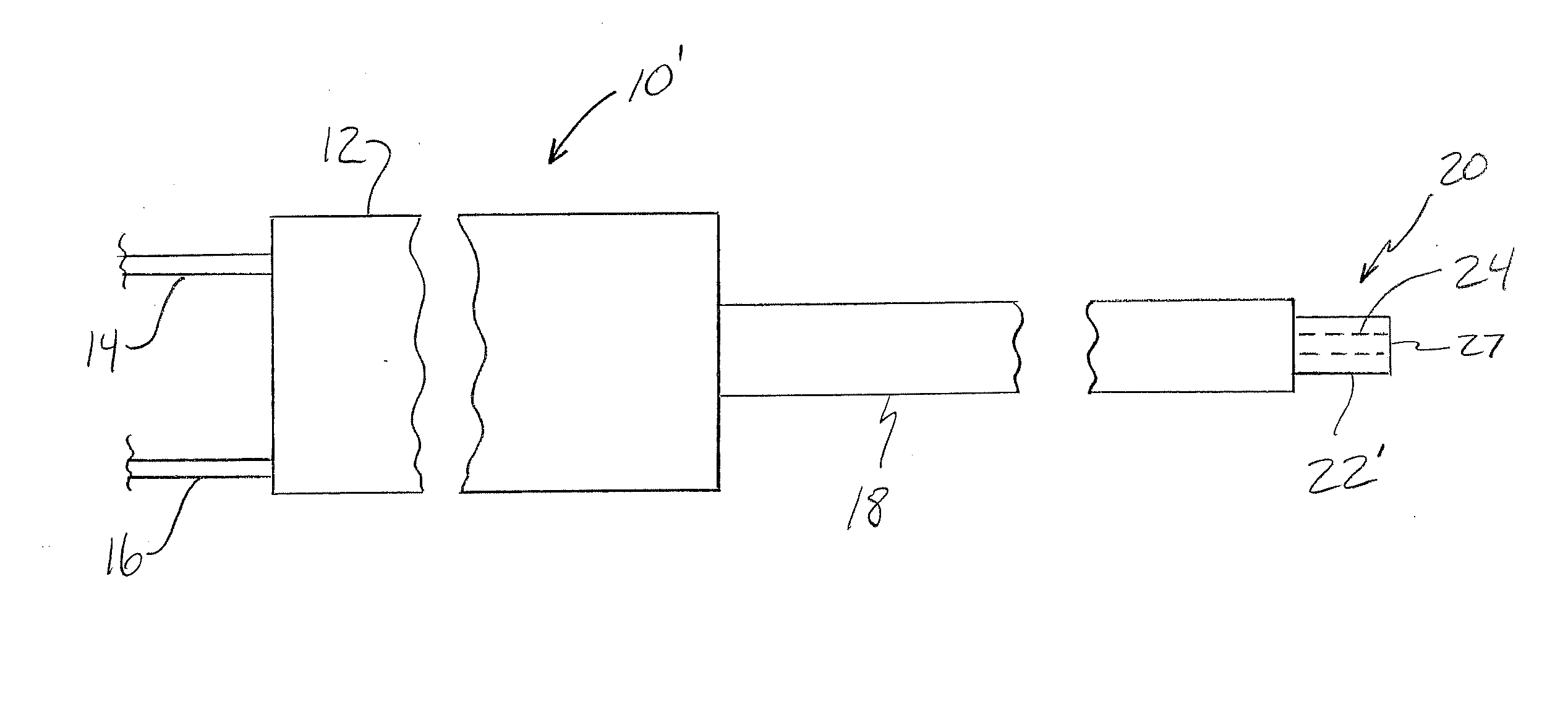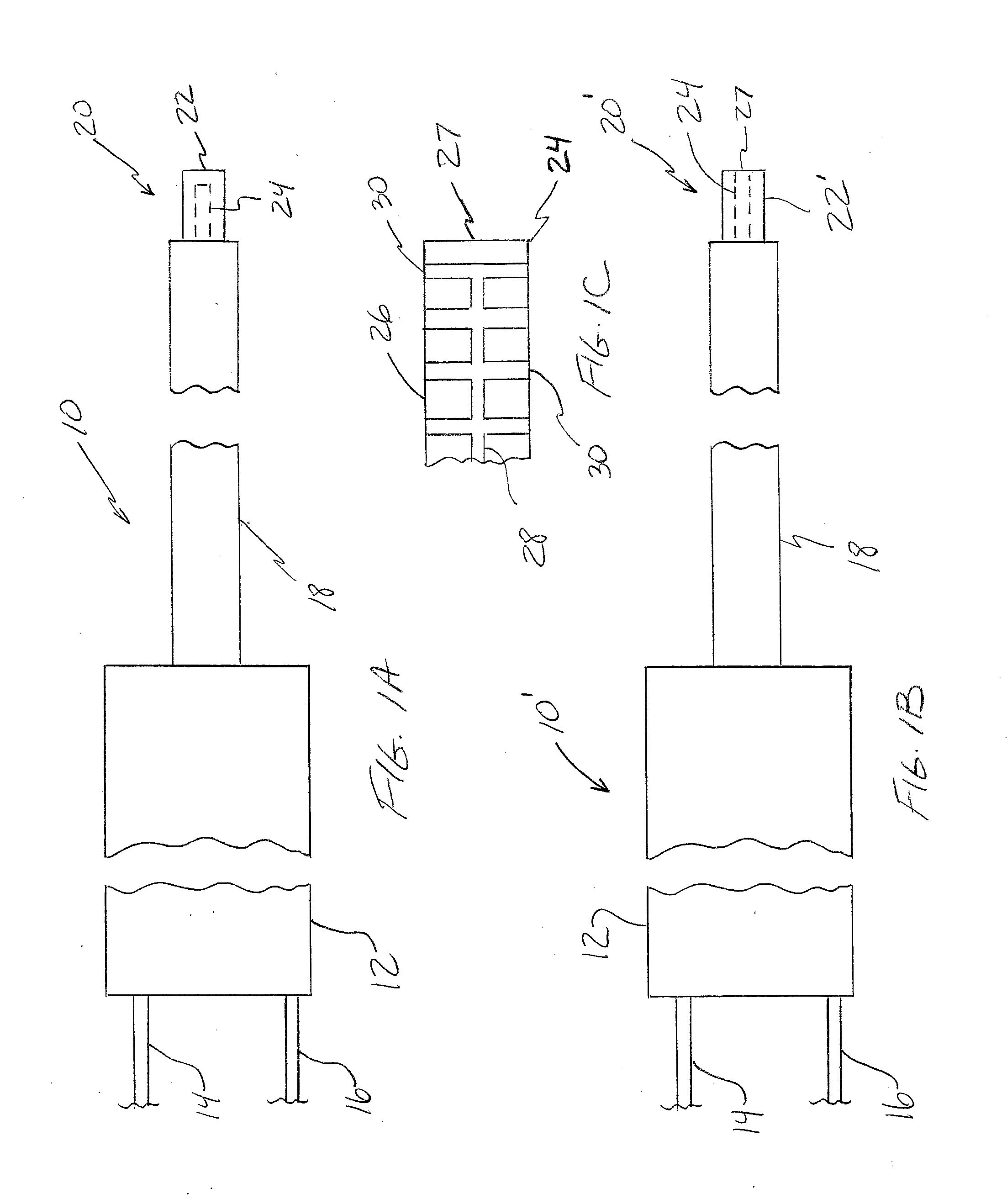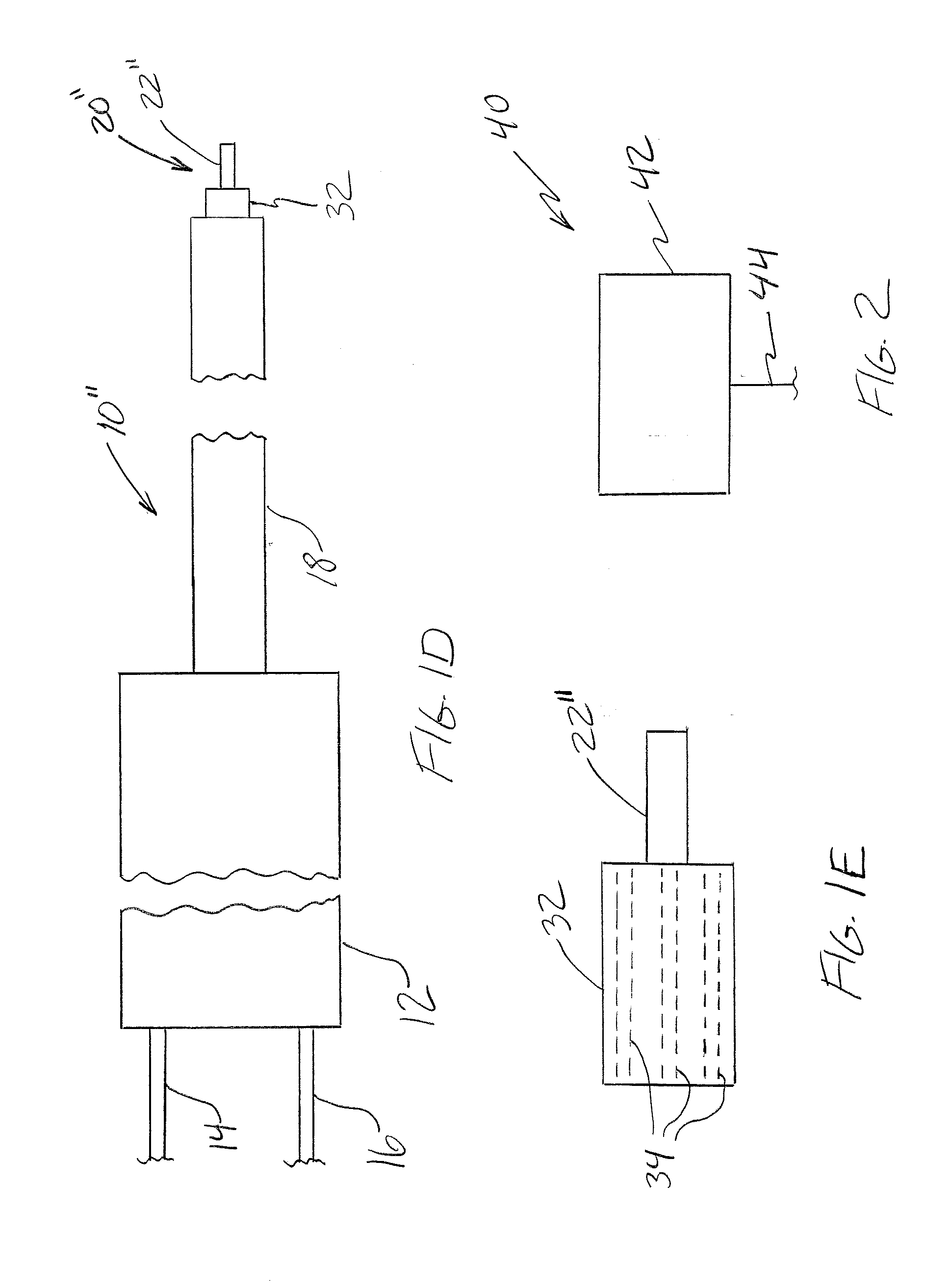Fabric electrode head
a fabric electrode and electrode head technology, applied in the field of electrodes, can solve the problems of increasing the vulnerability to thromboembolism, increasing the vulnerability of the patient to thromboembolism, and significant patient discomfort and even death, so as to reduce the porosity of the fabric, increase the fluid conductivity, and increase the thread count
- Summary
- Abstract
- Description
- Claims
- Application Information
AI Technical Summary
Benefits of technology
Problems solved by technology
Method used
Image
Examples
Embodiment Construction
[0068]Various embodiments of electrodes that utilize at least one fabric section for a corresponding electrode head will now be described, where at least part of this fabric section is electrically conductive or electrically dissipative. An electrically conductive portion of a fabric section is one having an electrical conductivity of at least about 10−2 S / m in one embodiment. An electrically dissipative portion of a fabric section is one having an electrical conductivity of at least about 10−9 S / m. Any such fabric section may include the following features, individually or in any appropriate combination: 1) a fabric section may be defined by one or more threads, where each such thread is a collection of filaments that are twisted together along a length dimension of the thread; 2) a fabric section may be defined by one or more yarns, where each such yarn is a collection of threads that are twisted together along a length dimension of the yarn; 3) a fabric section may be defined by ...
PUM
 Login to View More
Login to View More Abstract
Description
Claims
Application Information
 Login to View More
Login to View More - R&D
- Intellectual Property
- Life Sciences
- Materials
- Tech Scout
- Unparalleled Data Quality
- Higher Quality Content
- 60% Fewer Hallucinations
Browse by: Latest US Patents, China's latest patents, Technical Efficacy Thesaurus, Application Domain, Technology Topic, Popular Technical Reports.
© 2025 PatSnap. All rights reserved.Legal|Privacy policy|Modern Slavery Act Transparency Statement|Sitemap|About US| Contact US: help@patsnap.com



